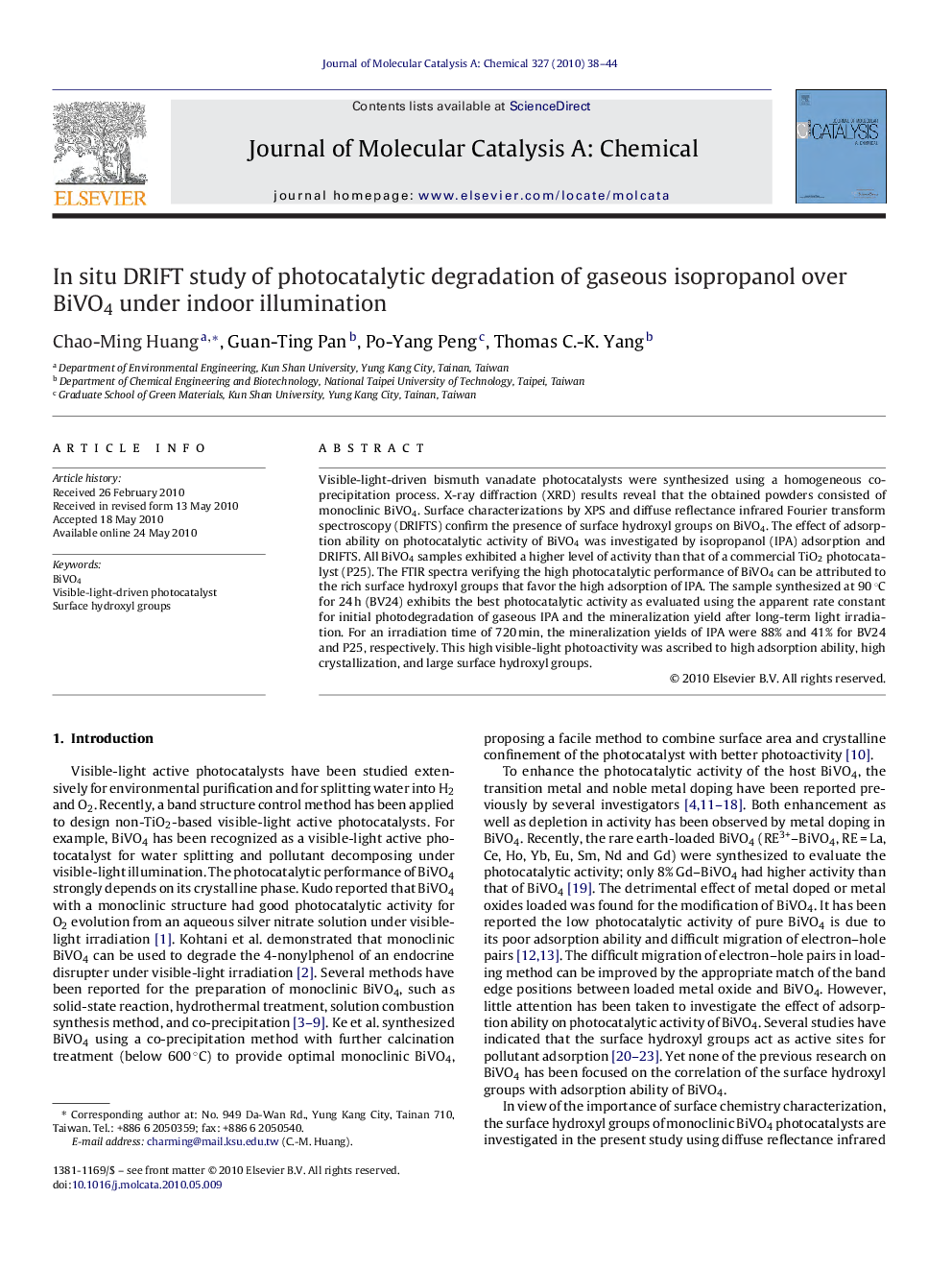| Article ID | Journal | Published Year | Pages | File Type |
|---|---|---|---|---|
| 66708 | Journal of Molecular Catalysis A: Chemical | 2010 | 7 Pages |
Visible-light-driven bismuth vanadate photocatalysts were synthesized using a homogeneous co-precipitation process. X-ray diffraction (XRD) results reveal that the obtained powders consisted of monoclinic BiVO4. Surface characterizations by XPS and diffuse reflectance infrared Fourier transform spectroscopy (DRIFTS) confirm the presence of surface hydroxyl groups on BiVO4. The effect of adsorption ability on photocatalytic activity of BiVO4 was investigated by isopropanol (IPA) adsorption and DRIFTS. All BiVO4 samples exhibited a higher level of activity than that of a commercial TiO2 photocatalyst (P25). The FTIR spectra verifying the high photocatalytic performance of BiVO4 can be attributed to the rich surface hydroxyl groups that favor the high adsorption of IPA. The sample synthesized at 90 °C for 24 h (BV24) exhibits the best photocatalytic activity as evaluated using the apparent rate constant for initial photodegradation of gaseous IPA and the mineralization yield after long-term light irradiation. For an irradiation time of 720 min, the mineralization yields of IPA were 88% and 41% for BV24 and P25, respectively. This high visible-light photoactivity was ascribed to high adsorption ability, high crystallization, and large surface hydroxyl groups.
Graphical abstractDRIFTS is one of the most frequently used tools for simultaneously obtaining information concerning the reaction and the characteristics of the catalyst surface.Figure optionsDownload full-size imageDownload high-quality image (111 K)Download as PowerPoint slide
